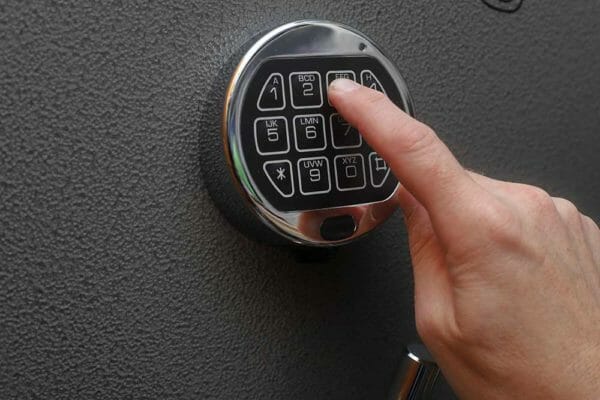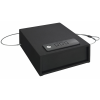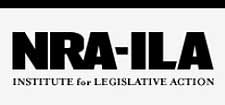Opinion

We generally don’t expect to see the Washington Post say anything positive about firearms or law-abiding gun owners, although there are occasional Op-Eds from pro-Second Amendment lawmakers, unbiased researchers and Constitutional scholars, and the like. A March 4 Opinion piece from a former Post staff writer is one of those rare exceptions.
The writer recounts his experience with a late-night intruder in his home in the Adams Morgan neighborhood of Washington, D.C. While he never determines how the man entered the home, or why he entered it, he does relate that he had a firearm, and, ultimately, that he was glad he had it. He never fired the gun to defend his life, never presented the firearm, and never even related to the intruder that he was armed.
He did, however, confront the intruder. After the first encounter, the unwelcome guest seemed to retreat downstairs, and the writer then called the police to report the break-in, then armed himself and went downstairs; still not aware of the intruder’s intentions, his whereabouts in the home, or if he, too, was armed. After another confrontation, the man eventually left, and was even later picked up by the police.
If you read the column, you may question some of the decisions the writer made—including deciding not to press charges for the break-in, or even trying to figure out how, exactly, the man got inside. But the fact that nobody was hurt is a positive result.
One passage some might consider emblematic of the problem with most anti-gun laws is how the writer relates retrieving his firearm.
It shines a bright light on the fact that the vast majority of “gun control” laws do nothing to thwart criminals, but virtually always find a way of inconveniencing—and sometimes endangering—the law-abiding.
The author notes that he stored his firearm—“a .357 magnum Smith & Wesson revolver”—in a closet, in a case, unloaded, and “trigger-locked.” When he determined it might be a good idea to arm himself while an uninvited stranger wanders about his home, he recounts his experience as he struggled to make his firearm actually suitable for self-defense:
“I retrieved the key hidden nearby but then struggled to find the trigger lock’s pinhole opening without eyeglasses. My nerves were jangling, too, as I huddled against a shirt rack, straining to hear whether anyone was still in the house and wondering where the cops were. After I fumbled with the key some more, I finally turned on a light and unlocked the gun.”
Fortunately, the intruder did not appear to be intent on doing harm, so the lost time spent struggling to make the firearm operable did not result in catastrophe for the writer.
Washington, D.C., does not have a law requiring firearms to be stored unloaded and locked in the fashion the writer chose, so that was a personal decision; but D.C. used to require such storage. That was exactly one of the provisions of D.C. law that was struck down in the landmark Supreme Court ruling in Washington, D.C. v Heller. In fact, the writer’s experience is a perfect real-world example of hypothetical scenarios Justice Antonin Scalia and Chief Justice John Roberts raised during oral arguments over the Heller case when questioning the constitutionality—and exploring the potential dangers to law-abiding gun owners—of the D.C. law that required firearms be stored unloaded and secured with trigger locks. They asked about how long it would take someone to unlock and load a “legal” firearm under the old D.C. law, and seemed concerned about how difficult it might be under a high-stress situation like suddenly needing a firearm for personal protection in the dead of night.
The Post article seemed to answer those old queries, and the answer was not a good one.
The writer’s decision to store his firearm in such a way is certainly his right, and no longer a legal requirement, but he may want to consider another means of securing his firearms for easier access in the case of emergencies; especially when he is supposed to be the only one in his home.
Sadly, in spite of the Heller decision, many anti-gun advocates and lawmakers continue to promote laws mandating firearms be stored in a fashion similar to how the writer stored his. In Tennessee, a bill has been introduced that would allow local governments to set their own mandatory storage requirements. In Minnesota, legislation has been introduced that would set storage standards on a statewide basis. Massachusetts did likewise last year.
NRA has frequently posted information on the misconceptions of “safe storage/mandatory storage” laws. Besides the myriad reasons such laws are impractical and ineffective at achieving their alleged goals of promoting “safety,” the fact remains that they are inherently unconstitutional.
Going beyond the fact that such laws are unconstitutional and could actually endanger the lives of people who need access to a firearm for personal protection, there is the added misconception that securing a firearm renders it inaccessible to those who should not access it. Trigger locks are relatively easy to remove by determined individuals who are not authorized to remove them; especially if the firearm has been stolen, and the thief has all the time and minimal tools needed for removal.
But a recent recall of roughly 120,000 biometric safes further exposes the fallacy that following government guidelines on storing firearms will avoid tragedy. According to reports, flaws in the biometric system of safes sold by several different manufacturers would allow “the safes (to be opened) when they should not (be)….” It would seem the biometric feature on the recalled safes, which is designed to recognize only the fingerprints of those specifically authorized to unlock it, can sometimes mistakenly recognize the fingerprints of someone not specifically authorized, and allow them to unlock the safe.
Storing firearms safely and responsibly is something NRA takes very seriously. We quite literally wrote the book on firearm safety, and safe storage is just one of the chapters; although it may also be one of the most controversial, even among law-abiding gun owners. There are many ways one can store a firearm in a “safe” manner, but how each individual does so is determined by that individual, based on their particular situation and needs.
The author of the Post article notes, “I was glad I had a gun that night….” He closes his account of his experience with, “I was struck by how much I did not want to use my firearm that night unless there was no other choice. But I’m glad I had a choice.” Again, a rare pro-Second Amendment message from the Washington Post.
It is unclear if the writer is rethinking how he stores his firearm in light of how things transpired, but if he is, he should also be glad he has any number of storage choices from which he can choose. The right to choose the manner in which law-abiding gun owners store firearms they may need in an emergency situation should always be left up to those gun owners.
We hope he appreciates having that choice, too.
Live Inventory Price Checker
 |
Barska Quick Access Electronic Keypad Safe Silent Access Mode Black Outer Dimensions - 10.5 x 8.5 x 4.5 in | Optics Planet | $ 333.40 $ 155.99 | |
 |
Blaser Model 2 Quick-Access Cartridge Pouch for (2) Lg Ball Cartridges 6.5x57 (R) to 9.3 165011 | EuroOptic.com | $ 44.00 | |
 |
Vaultek NSL20 Quick Access WiFi Slider Safe - Black | Rainier Arms | $ 289.99 | |
 |
STACK-ON Quick Access Drawer Safe w/Electronic Lock | KYGUNCO | $ 143.99 |
About NRA-ILA:
Established in 1975, the Institute for Legislative Action (ILA) is the “lobbying” arm of the National Rifle Association of America. ILA is responsible for preserving the right of all law-abiding individuals in the legislative, political, and legal arenas, to purchase, possess, and use firearms for legitimate purposes as guaranteed by the Second Amendment to the U.S. Constitution. Visit: www.nra.org

from https://ift.tt/nRf2Fym
via IFTTT

No comments:
Post a Comment